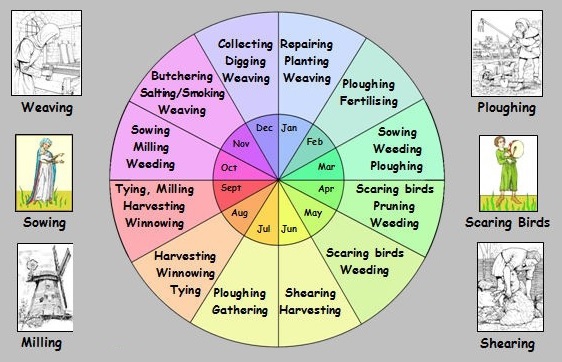Agriculture (technology)
Agriculture is the process of cultivating soil, planting and harvesting crops. The technology establishes the fixed agrarian society, the single most important step towards creating a civilization. Storage of grains, pulses, tubers and vegetables ensures a stable food supply for a larger number of people than either fishing or hunting and gathering.
Like all technologies, agriculture is distinguished its techniques, processes and societal relationships. The page below describes the technology according to its sub-technologies (shown as minor headings). Details are further classified into tools, culture, blocks, improvements and associated references.
DEV-6
Primitive Agriculture
The domestication of plants consists of the gathering of wild grains, tubers, pulses, vegetables and other crop species, while creating techniques to allow sustainable farming. The amount of food grown allows only enough for the immediate workers, as yields per parcel of land are very low. To protect the land against predation or erosion, low broken-stone walls are built. To some extent, the population continues to support its food supply through hunting and fishing.
- Tools: (made of hemp/stone/wood): flail, hand mill, hoe, mortar & pestle, scythe, sickle, winnower
- Ard plough: a scratch plough without a mouldboard, resembling a hoe which is dragged through the soil by draft animals and very rarely by people.
Homesteading
The forming of permanent conglomerations allows for a sedentary, sustained population, though usually isolated and lacking in civil engineering or planning. These hamlets or villages are able to organize themselves for the public welfare of all its residents. There is no indepedent ownership of land and food that is preserved is set aside for the survival of all.
- Tools: thatch roofs
- Farmyards: multiplicity of structures, including an animal barn, tool shed and houses processing/storage.
- Fencing: stone walls surrounding yards, palisades surrounding villages, stiles to protect fields from predators.
- Culture
- The Village: the yearly seasonal cycle creates patterns of living, promoting communities where everyone has a common goal. The need to protect fields draws residents together, who settle land disputes through elder councils.

